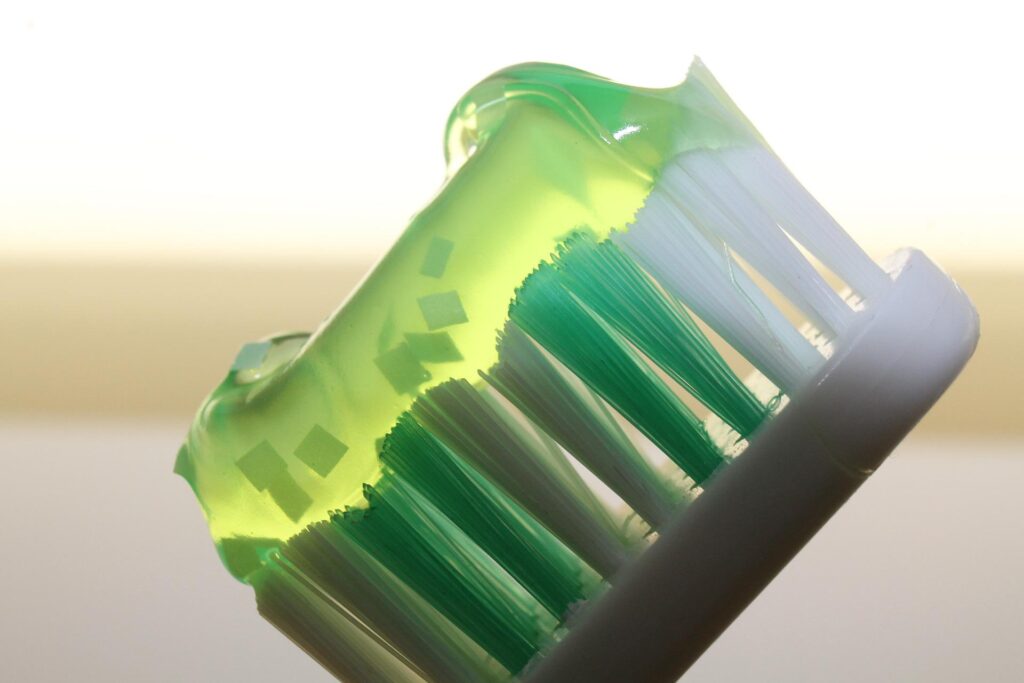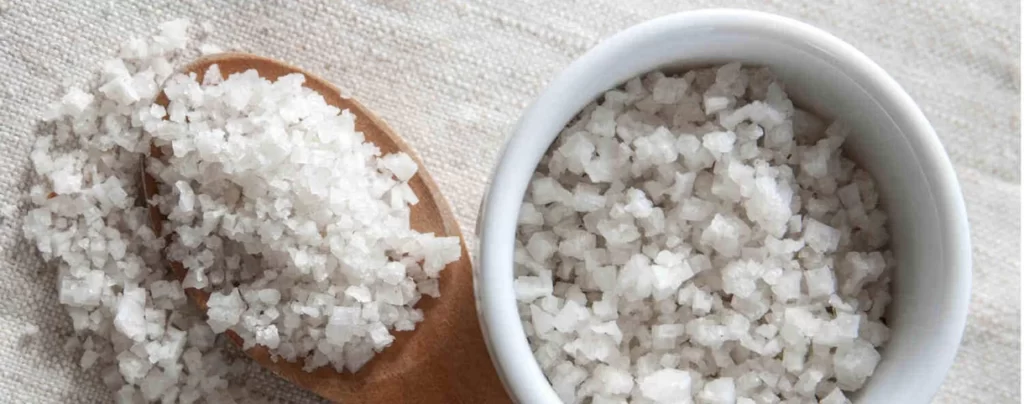If you’re here, it’s probably because you watched my hotel review at the Hipotel Paris Gambetta République in Paris. Unfortunately, I discovered blood stains on my mattress during my inspection.
As a housekeeper, I’ve been confronted with this type of surprise. Guests can be ashamed and/or negligent and don’t warn their room attendant or housekeeper. They don’t realize they can put the staff at risk. Several diseases/viruses are carried by blood: hepatitis B, hepatitis C, HIV… We need them to take their responsibilities. On another hand, staff needs to wear gloves. I know it’s annoying and it’s easier to work without because our mouvements are more natural and we can feel everything. But if you catch something and you’re not wearing any PPE provided by your employee, he won’t be responsible. You can only blame it on yourself.
Younger, while cleaning this type of stain, I thought bleach would save my life… What a rookie mistake! We always jump on the first cleaning product and scrub under hot water because it usually works, it’s a habit. But in reality, the first thing we should do is: check the label. Because each fabric is different, they have different reactions and different cleaning instructions.
Blood is composed of proteins, organic compounds present in our body. When exposed to heat, proteins coagulate or as we say «cook». As a result, the blood becomes thicker. Therefore, any type of heat source (hot water, dryer…) shouldn’t be used on a blood stain before it’s totally gone. You’re taking the risk to seep the blood deeper into the fabric’s fibers. It’s easiest to remove when it’s fresh, so don’t waste any time and clean as soon as possible.
Before washing, it’s necessary to treat your stain. Test your product on a small area.
Here are 20 products you probably have in your cupboards you can use as treatments to remove blood stains:
WATER

It’s the first thing you should use before any product or chemical.
- Run cold water on small stains or submerge larger stains in a sink in cold water to wash out the maximum.
- Or rub an ice cube.
Sometimes it’s enough!
1. UNSEASONED MEAT TENDERIZER

It’s a surprising solution. I never thought about sprinkling meat on my sheets… It should be noted that meat tenderizer contains enzymes, most often Papain found in papaya and Bromelain found in pineapple, that help break down proteins into smaller pieces.
- Sprinkle tenderizer powder into the stain
- Add water to create a paste
- Leave it for 30 minutes
- Wash out with cold water
2. WD-40

Even if we don’t know the ingredients in the WD-40 because the company keeps it a secret, we know it’s formulated to be a light lubricant, penetrating oil, and water-displacing corrosion preventative and it lifts stains.
- Spray directly on the stains
- Leave it for 5 minutes
- Wash out with cold water
3. TOOTHPASTE

Toothpaste contains abrasive and lightning agents that dissolve and launder blood stains.
- Apply toothpaste to the bloodstain
- Let it dry until it forms a crust
- Wash out with cold water
4. ASPIRIN

In Aspirin, some ingredients work as bleaching agents, therefore they’re laundering the fabric. It’s efficient on white and light-colored garments.
- Mix crushed tablets in water until obtaining a paste
- Apply your paste to the stain
- Leave it for 30 minutes, or overnight for a hard stain
- Wash out with cold water
5. COLA

2 ingredients from cola help remove your stains: carbonation and phosphoric acid. They prevent stains from setting and break down protein in the blood.
- Soak the stained garment in the drink overnight
- Wash out with cold water
6. TALCUM POWDER

The absorbent power of talcum powder will help to withdraw moisture and stop the blood stain from solidifying.
- Create a thick paste with talcum powder and water
- Apply the paste to the stain
- Let it completely dry
- Brush away the dry paste
- Wash out with a dried cloth
7. SODA CRYSTALS

Soda crystals have been used for more than 2 centuries. Its alkaline properties help lift stains. But it can’t be used on delicate clothing.
- Cover your stain with soda crystals
- Dab the blood stain with a clean damp sponge
Or soak your clothing in a sink with cold water and soda crystals for 1 hour
3. Rub gently by hand
4. Rinse with cold water
8. CORNSTARCH / FLOUR

This gentle method will help you dehydrate your stain without damaging your material.
- Form a paste with cornstarch or flour and water
- Rub the paste into the fabric
- Let the paste completely dry
- Brush the excess paste off
9. SALINE WATER

Do NOT confuse “saline solution” and “contact solution”. Indeed, you should choose the first that includes boric acid, an ingredient that disintegrates the bloody stain.
- Put a few drops on the blood stain
- Dab with a cloth
- Rub the stain gently until it is removed
- Wash out with cold water
10. TABLE SALT

Salt has dehydrating properties that will lift up the blood. Do NOT use into delicate fabric.
- Sprinkle salt on the area to absorb the moisture or dissolve salt in the water
- Dab the stain with the solution
Or soak your fabric in the salty water for 4 hours
3. Wash out with cold water
11. RUBBING ALCOHOL

Rubbing alcohol is a diluted version of isopropyl alcohol. The first product is safer than the second because of its concentration. Indeed, it contains 70% isopropyl alcohol and water. It’s NOT recommended to use on delicate clothes.
- Dab with a cloth dampened with rubbing alcohol.
- Wash out with cold water
12. AMMONIA

Ammonia has alkaline properties and is corrosive which helps remove the blood. NEVER use on delicate fabric.
- Pour a small quantity of ammonia on a damp sponge
Or mix 1 teaspoon of laundry detergent and 1 tablespoon of ammonia in water then soak your sponge
2. Press your stain
3. Wash out with cold water
13. DISH SOAP

Some of you will be surprised but I tried it and it works! Dish soap is designed to break down food/cooking oil. However, it’s incredibly efficient on blood stains.
- Submerge your garment in cold water to flush out the maximum
- Pour dish soap into the stain
- Rub the stain gently until it is removed
- Wash out with cold water
14. BAR SOAP

Marseille soap, Exit soap, Fels-Naptha soap, Gall soap, Terre de Sommières soap, Aleppo soap, and African black soap. Not only do those soaps have high stain-removing power but they also have degreasing power.
- Submerge your garment in cold water to flush out the maximum
- Rub the stain with the bar soap
- Leave it to soak for a few hours in soapy water for hard stains until it is removed
- Wash out with cold water
15. HYDROGEN PEROXIDE

Be careful, you’ll need to wear gloves as this product can irritate the skin, and avoid delicate fabric since it’s a mild bleach. For those reasons, it’s better to use it on white or light-colored sheets and clothes because it’s discoloring. Mixed with blood, it creates an oxidizing chemical reaction that helps break down the stain.
- Dab the stain with a cloth soaked in hydrogen peroxide
- Leave it for a few minutes
- Wash out with cold water
16. BAKING SODA

Definitely, one of the basics in your kitchen: baking soda. It dissolves and lifts the blood stains.
- Mix 1 part of powder with 2 parts of cold water
Or 1 part of powder with 1 part of hydrogen peroxide
2. Pour the mixture on your stain and leave it for 30 minutes
3. Removing the excess with a damp cloth
4. Wash out with cold water
17. LEMON

Lemon is a lightning agent better used on white and light-colored fabric but be cautious as it damages delicate fabric.
- Put a few drops of lemon juice on the stain
- Leave it for a few minutes
- Scrub the stain gently until it is removed
- Wash out with cold water
18. VINEGAR

The classical vinegar works better on white or light-colored pieces. Because of its acidity, bloodstains can be eliminated easily.
- Apply the liquid directly to the stain
- Press your stain with a damp cloth
Or leave your clothing in vinegar water for 30 minutes for bigger stains until it is removed
3. Wash out with cold water
19. SALIVA

Yes, you read me right. It would be in last resort. Like camping or jungle. But we tend to forget that saliva contains amylase, a digestive enzyme participating in the digestive process. As a result, it can break down fats, sugars, starches, proteins, and other organic matters.
- Apply saliva directly to the blood-stained area.
- Scrub the area until it is removed
- Wash out with cold water
20. ENZYME-BASED CLEANER

Due to its composition, enzyme-based cleaner help breaks down proteins in the blood.
- Submerge your garment in cold water to flush out the maximum
- Pour cleaner on the stain
- Rub the stain by hand until it is removed
Or let it soak in soapy water for 1 hour
4. Wash out with cold water
FEW EXEMPLES
- Natural fiber fabric: soap, salty water
- Delicate fabric: cornstarch, soap
- Synthetic fabric: black soap, aspirin, saline solution
- White sheets: hydrogen peroxide, vinegar, soap
- Mattress: cornstarch, hydrogen peroxide, ammonia, talcum powder, baking soda, vinegar
- Sofa: cornstarch, soap
- Carpet/rug: ammonia, soap
- Leather: baking soda
- Jeans: ammonia, meat tenderizer
CONCLUSION
Whether it’s on a mattress, a piece of clothing, or a carpet, rules are the same :
- Treat the stain as soon as possible, DON’T let it dry!
- Dab the stain to remove the maximum moisture, don’t rub or wipe to not spread
- Run cold water on your stain to flush out the maximum
- Read your label
- Choose the appropriate product to treat the stain
- Repeat the process until the stain is gone
- Don’t use any type of heat before removing the stain completely
- Wash your garment normally following the instructions on your label after treatment
- Disinfect and sanitize your workstation at the end of your task
If you have dry stains like those I found in my hotel room, please don’t give up!

